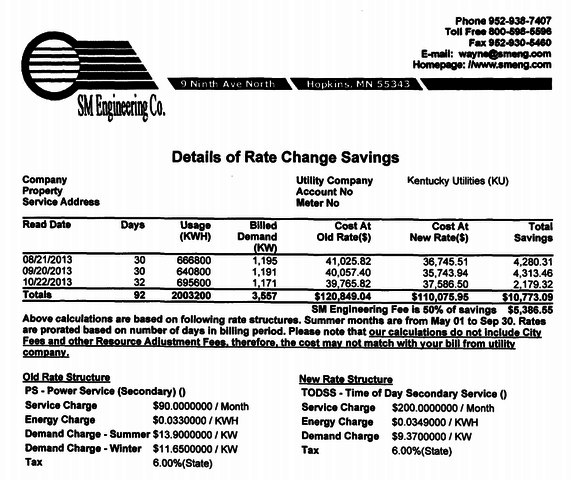
There are 3,800 utility companies across North America. Most of them use just seven types of utility bill rates. Do you know which ones your utility company uses? If you don’t, you’re not alone. With so many different bill structures, customers like you have a difficult time understanding their utility bills.
A little knowledge of your utility bill rate can save you thousands of dollars a month. Here’s a real-world look at how we saved a Kentucky company more than $10,000 in three months simply by transitioning them to a new rate structure:

7 Types of Utility Bill Rates
Here’s a simple breakdown of the seven most common utility bill rates North American utility companies use.
- Simple (or Fixed) Rates are based on usage and cost per kilowatt hour (kWh).
- Step Rates start low and increase as usage increases.
- Time of Use (TOU) Rates are higher during peak usage and lower during off-peak times, such as weekends.
- Demand Rates are common in commercial and industrial facilities and are similar to TOU rates.
- Tiered within Time of Use Rates are not easily determined unless you monitor your usage, but are unusual nationwide (though common in California).
- Seasonal Rates vary with the seasons and are common across the country.
- Weekend/Holiday Rates apply to customers on TOU or tiered rates.
There’s also an eighth option: a combination of two or more of the rate structures above. It’s no wonder most businesses don’t know what their utility bill rate is!
Deciphering your utility bill rate can be difficult without help from utility bill experts. SM Engineering’s team of engineers have over 36 years of experience analyzing utility bills and uncovering opportunities for savings. We’ve worked with many of the 3,800 utility bill companies to negotiate more favorable rates for our customers.
SM Engineering can take the guesswork out of understanding your utility bill. Give us a call or schedule a meeting to start the no-obligation, free audit process.


